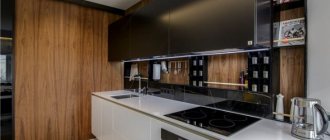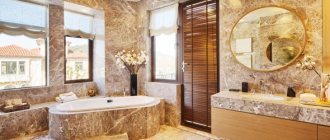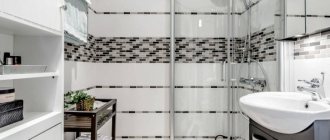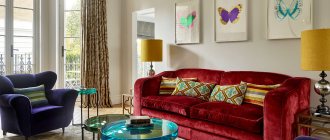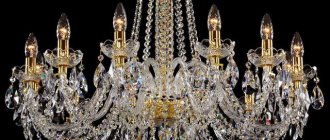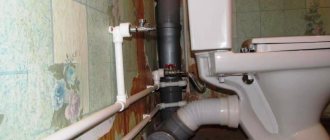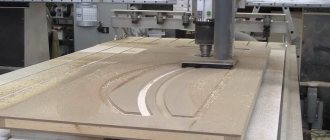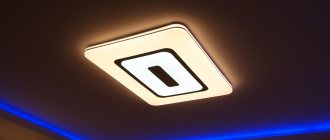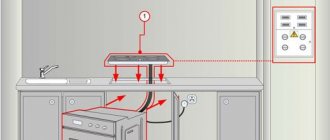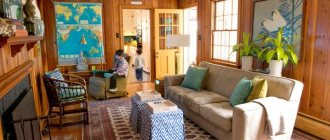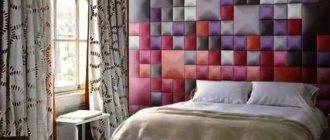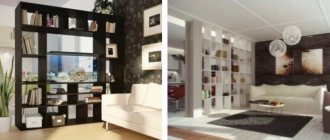From an operational point of view, the shower room is a very complex room. There is always a high level of humidity, condensation and temperature changes.
Finishing materials for the bathroom, unlike the rest of the living space, must have improved characteristics. In addition to successfully resisting negative factors, the raw materials must be able to be installed with your own hands.
Often these functions in the shower room are performed by ceramic tiles. Of course, such pleasure is worth quite a lot of money! However, modern technologies present a new generation of finishing materials - moisture-resistant MDF panels for the bathroom . They have a number of advantages, thanks to which you can significantly save money, time, and nerves. Today, these products have become a full-fledged alternative to tiles.
Advantages and disadvantages
It is worth noting that not everyone can afford expensive materials for decorating the walls in the shower room. MDF panels for the bathroom are an effective way to get out of this situation. They are distinguished by their availability, strength, and durability. They are convenient to mount on the wall. Sheet products are made not only from wood sawdust, but also from other wood components that are specially processed.
MDF sheet
MDF panels for walls are in stable demand in the domestic market. They are usually used instead of tiles in the shower room. Sheet wall products are in no way inferior to ceramic counterparts, while significantly benefiting in price. In addition, MDF has an attractive appearance, it is made like a rectangle, and has no gaps at the edges or at the ends. Strengths of moisture-resistant wall panels:
- ease of installation;
- long service life;
- ease of processing;
- affordable price;
- good thermal insulation;
- high strength;
- environmentally friendly material;
- ease of operation;
- a wide range of.
In addition, it is necessary to note the ability of sheet models to be combined with other finishing materials. They can be mounted on the wall together with stone, under tiles, and can also be used with other types of finishes.
The dimensions of the panels allow the products to be used in any shower room, regardless of its size. Moisture-resistant MDF is equally suitable for both small rooms and a large bathroom.
MDF panel
However, it is worth noting that sheet panels for the bathroom also have their drawbacks. This is an absolutely normal phenomenon, since today it is difficult to imagine any material without weaknesses. In addition, with proper skill, you can avoid creating unpleasant situations. Currently, MDF products have the following disadvantages:
- low impact resistance;
- poor resistance to scratches;
- fire hazard.
Phenol
Phenol is a very simple aromatic substance. In its pure form, it looks like crystals with a faint smell of gouache - or, to be precise, this gouache smells like phenol. Smoked products also smell of phenol and its derivatives, since smoking actually represents the saturation of the product with aromatic hydrocarbons. They are what give products their characteristic odor and have a detrimental effect on microorganisms. Unfortunately, not only on them.
Phenol is poisonous. When it comes into contact with the mucous membrane, it causes severe irritation, and when inhaled, it disrupts the functioning of nerve cells. In addition, it easily reacts with various substances that are present in our body. The aromatic compounds formed during this process can accumulate and cause various problems. There is evidence that at least some of them are carcinogenic, although there is no evidence that phenol itself is carcinogenic to humans.
The good news is that modern chipboard contains no phenol. It is manufactured using urea-formaldehyde resins, which in principle do not contain phenolic compounds. Phenol-formaldehyde resins are used today only for the production of FSF plywood and laminated plywood based on FSF, but plywood of these brands is prohibited for indoor use.
Installation Features
In order to attach models of various sizes to bathroom walls, no special skills or abilities are required. By and large, the installation of wall MDF is very simple, but it has its own nuances. Many panels are attached to the sheathing, which greatly simplifies the installation process. In addition, if the walls of the shower room are smooth, then finishing can be done without prior preparation.
Installation on the sheathing
However, if there are defects in the wall surface, they must be corrected. The wall should be primed, plastered, or gypsum board blocks used. The latter option allows you not only to level the surface, but also to create a new one. After preparation, you need to take measurements of the room. In addition, it is necessary to let the moisture-resistant panels sit for several days in the bathroom. This will allow them to acclimatize and get used to new conditions.
Leveling the wall with plasterboard
After which they will acquire qualities that correspond to the temperature regime of the shower room, as well as the level of humidity. It is best to attach sheet panels of various sizes to the wall using a special frame - sheathing. This makes it possible to connect communications, for example, wiring for lighting. This method is suitable for coatings with small defects that need to be hidden. Wall MDF is mounted using self-tapping screws, special brackets, clips or nails.
Features and characteristics of moisture-resistant MDF
Sheet finishing materials for walls are produced from MDF - pressed fine chips mixed with special binders and paraffin additives. The latter provide products with an increased level of moisture resistance.
The green color of the panels is due to the inclusion of moisture-repellent components in the composition
For comparison: standard MDF boards are recommended to be used at a relative air humidity of 30-50%. Moisture-resistant panels can be used in rooms where the same indicator periodically increases to 70-80%.
That is, the material is perfect for wall cladding in the bathroom, kitchen, laundry room, etc.
A solid slab is sawn in production into large-format sheets of the following sizes:
- height – 2.44 m;
- width – 1.22 m;
- thickness – 3-8 mm.
The surface of sheet panels for walls is covered with a special plastic or melamine film of increased strength with a textured decor for ceramic tiles, porcelain stoneware, terracotta, natural stone, brick.
Panels with imitation tile patterns are very common
When choosing the decor you like, keep in mind that wood imitation boards are intended only for dry rooms; therefore, they are absolutely not suitable for decorating a bathroom, shower room, or dining room.
In other characteristics, the MDF board is practically no different from the standard:
- Density varies from 400 to 550 kg/m3;
- The bending strength of the product does not exceed 20 MPa;
- The level of swelling of the product when completely immersed in water for 24 hours does not exceed 12% of the total mass;
- The release of formaldehyde vapor complies with E0 or E1 standards (up to 10 mg per 100 g of dry matter inclusive);
Russian kitchen and bathroom stores offer products from Canadian, American, and Chinese manufacturers (Canfor, DPI, Eucatex). Occasionally you can find Austrian and German products. Among the domestic manufacturers, the most famous are sheet panels for walls, "Plitgroup" and others. The cost varies between 1200-4000 rubles/slab.
Glue option
You can attach moisture-resistant MDF products in the bathroom with glue only on a flat surface. With the help of solutions, models of various sizes are installed on the wall quite firmly. However, during dismantling this significantly complicates the process. This method will save shower space and also improve the moisture resistance of the room. Sheet panels must be laid on a layer of adhesive not exceeding 5 mm.
The glue is applied with a spatula
Moreover, it is best to apply the adhesive composition with a notched trowel, as this allows various surfaces – panels and walls – to be bonded together more effectively. In order to carry out installation correctly, you need to start from the bottom corner of the product. Then continue laying the MDF to the side until it stops. Thus, by analogy, subsequent rows are applied.
Do-it-yourself panel installation
The protruding glue should not be smeared, but the excess mixture should be removed. The distance between moisture-resistant products should not exceed 1.5 mm. To increase efficiency, it is necessary to use a sealant with a silicone component. This will make it possible to increase the moisture resistance of the coating. In addition, you can use moldings to decorate the gaps between panels.
This method will not only visually hide the joints, but also improve the operational characteristics of the room. It turns out that MDF panels are a moisture-resistant and environmentally friendly material that has all the necessary qualities for use in a room with high humidity and changes in temperature, i.e. bathroom
Flaws
Of course, like any building material, moisture-resistant MDF panels have several disadvantages:
- fear of severe damage from blows or scratches;
- fire hazard. MDF panels quickly catch fire, so they should not be used to decorate a work area in the kitchen where there is a high risk of fire, for example, near the stove;
- the need to first level the wall on which the MDF sheet will be attached;
- After cutting the required sheet shapes, careful adjustment in size will be required during installation on the wall, and the connecting seams must be hidden behind decorative overlays, as well as pre-treatment with sealant.
And in terms of quality, aesthetics and environmental friendliness, the material has no equal. Therefore, more and more builders are using this finishing building material when renovating premises.
Where can I install it?
You can decorate any room with MDF panels, you just need to decide on the design. And then look at the various variations in special stores. It is also necessary to pay attention to the additional components needed when installing the sheets.
If you have chosen the sheet version of MDF panels, then you will need the following available materials:
- special decorative moldings that will mask all joints and corners after installing the sheets on the wall. They take the form of long slats of various sizes;
- adhesive composition on which the future panel sheet will be attached;
- A hacksaw will be needed to adjust all the panels to the maximum size.
As for the purpose of the molding, several points need to be highlighted here:
- there are decorations connecting the panels at the junction;
- decorations similar to plinths, most often used when finishing ceilings or walls, they perfectly mask the joints between panels;
- end decorations give the finishing an additional aesthetic appearance;
- decorations used for interior and exterior decoration of corners;
Angular
- starting materials are attached at the initial stage of installation work, only vertically or horizontally;
- universal type decorative materials.
Decorative
When ordering MDF sheet panels, pay attention to the purposes for which this decorative material can be used. All the necessary information is in the building material passport.
For finishing the bathroom and toilet there are special MDF panels with high moisture resistance. Only interior spaces can be decorated with decorative MDF panels.
Fiberboard as a budget option for covering walls
If this material is inferior in density to MDF, it is only slightly, and only because the fractions used in the manufacture of fiberboards are quite large. However, the use of synthetic resins, paraffin and rosin in combination with hot pressing under high pressure makes it possible to obtain moisture-resistant and, most importantly, durable panels. In a mixture of wood fibers, coniferous species sometimes predominate, which significantly increases the material’s resistance to water after pressing at high temperatures, when the resins are partially released from the fractions. To obtain a particularly durable class of panels, additional impregnation with pectol - tall oil - is used, which also increases moisture resistance.
